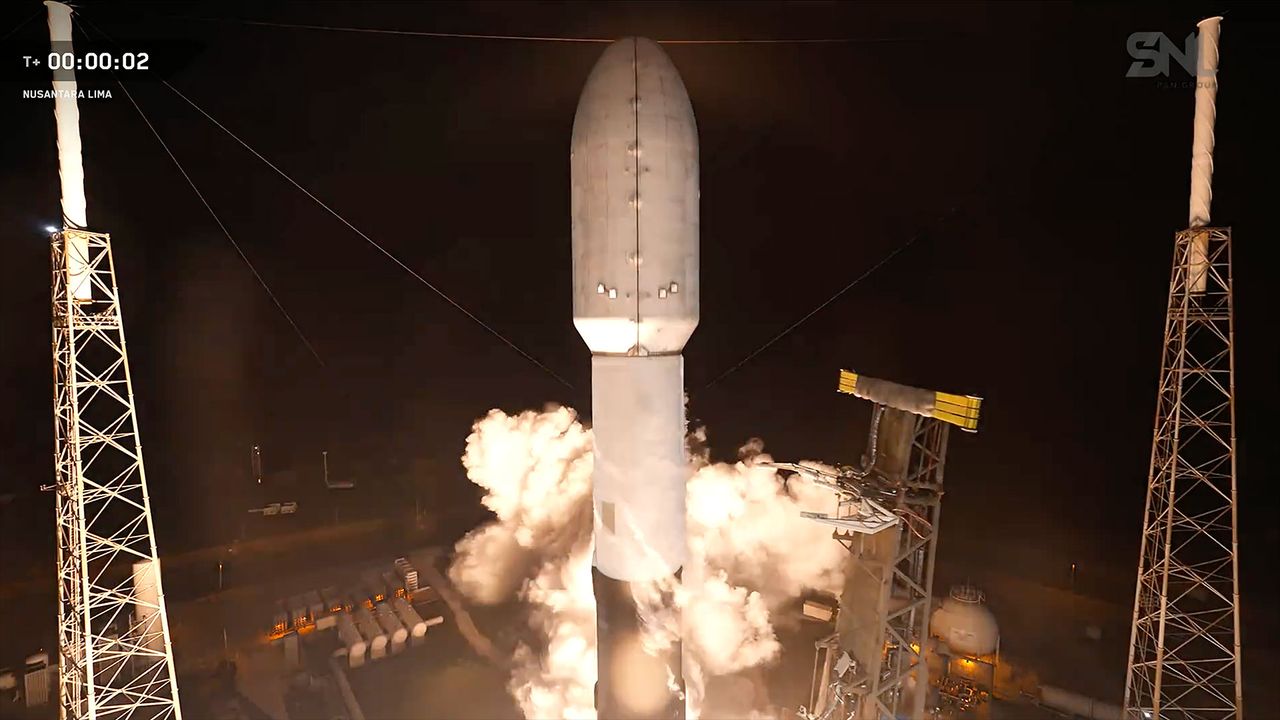Now Reading: SpaceX Deploys Advanced Satellite for Indonesian Telecom Giant
-
01
SpaceX Deploys Advanced Satellite for Indonesian Telecom Giant
SpaceX Deploys Advanced Satellite for Indonesian Telecom Giant

Fast Summary:
- SpaceX launched the Nusantara Lima satellite on a Falcon 9 rocket from Cape Canaveral, Florida, on September 11, 2025.
- The launch was delayed by three days due to bad weather and occurred at 9:56 p.m. EDT (0156 GMT).
- The rocket’s first stage successfully returned to Earth and landed on the drone ship “A Shortfall of Gravitas” in the Atlantic ocean after 8.5 minutes.
- This marks the 23rd flight for this particular booster (designation: 1078), nearing SpaceX’s reflight record of 30 launches per booster.
- The satellite reached geosynchronous transfer orbit approximately 27.5 minutes after liftoff for further deployment into geosynchronous orbit (~35,785 kilometers above Earth).
- Built by Boeing for Indonesia’s PT Pasifik Satelit Nusantara (PSN), Nusantara Lima will provide high-capacity telecom services to Indonesia’s islands and neighboring countries starting in 2026.
- with a capacity of over 160 Gbps, it aims to boost connectivity for underserved communities and businesses across the region.
!Image1
Caption: A SpaceX Falcon 9 lifting off from Cape Canaveral.
!Image2
Caption: Satellite deployment seen during an orbital sunrise.
Indian opinion Analysis:
The successful launch of Nusantara Lima highlights growing demands for orbital communication networks, especially by large archipelagos like Indonesia confronting digital connectivity challenges across dispersed regions. For India, frequent advancements in space technology globally reaffirm the necessity of accelerating its own satellite advancement under ISRO or through public-private collaborations with entities such as Antrix or NSIL.
India has similar remote population needs that could benefit from geostationary satellites capable of delivering high-speed internet access-especially within rural areas aligned with Digital India initiatives. Moreover, partnerships akin to those between PSN and Boeing could inform strategy formulation as Indian startups emerge within aerospace sectors post-space policy liberalization.
By ensuring robust domestic infrastructure while enhancing international competitiveness amidst leading private players like SpaceX, India can address both socioeconomic goals and cement its place on the global space stage.
























